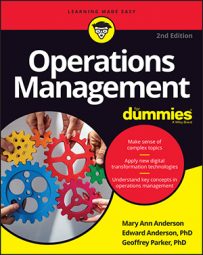Companies spend a lot of time and resources on process improvement projects that fail to produce the desired results in operations management. A primary reason that many projects fall short of expectations is because they fail to follow a structured approach.
Documenting where a process has been and where it needs to go provides a road map — with directions — that can save an enormous amount of time and resources that may otherwise be wasted on dead ends and cul-de-sacs. How novel, right?
Follow these steps when undertaking an improvement project:
Map your process.
Determine your current process metrics.
Determine whether you have enough capacity to meet your demand requirements.
Decide what process metrics you need to improve and set goals for each.
Use process improvement techniques to design changes that will accomplish your desired goals.
Draw the new process map, implement the design changes, and observe the new process.
Reassess your process metrics and goals.
Repeat Steps 1 through 7 for continuous improvement.
Start by creating a “what we do now” process flow. Many companies skip this step because it’s time-consuming, but having a visual of the current system can reveal valuable information. For instance, a visual of the status quo highlights cross-departmental interaction points, which can give you insights into matters involving delay and waste. A baseline process map can also facilitate buy-in for the improvement effort throughout the organization.

